I’m a naturopathic physician who was trained at NUNM (then called “NCNM”) in 1996. I graduated in 2001. I was already interested in homeopathy some years before I started my medical education. At the time I was at the school, there was still a reasonable buzz about homeopathy at the school. It has since waned considerably.
I recall several NCNM teachers describing homeopathy in miraculous terms. In addition, it was common to hear instructors almost proudly proclaim that only after 10 years of rigorous study could you be beyond the “beginner” realm. I even recall another instructor saying that homeopathy is more demanding than being a neurologist or a brain surgeon.
In addition, there was considerably less robust research available at that time. The research for homeopathy has greatly increased since that time1,2. Even though many students were initially beguiled by some of the potential of homeopathy, it appeared that only the true “homeo geeks” hung in there and ended up using homeopathy as a prime modality – understandable given the above apparent realities.
I was one of those homeopathy geeks. I, like many of my peers, assumed that homeopathy is inherently extremely challenging. It’s an exceptionally demanding discipline and to use it effectively requires years of hard work to reach competency. Looking back, it is not hard to understand why many naturopathic students did not choose homeopathy as their specialty. In addition, I believe this is one of the major impediments to holistic physicians using homeopathy. This is because the on ramp is simply too daunting for many busy clinicians.
Nevertheless, I opened my practice in Portland Oregon in 2001 practicing primarily homeopathic medicine for mental health challenges. I worked hard at practicing and continuous study of homeopathy. After about 10 years into my medical career, I got burnt out with homeopathy.
I then pursued IV therapy and began practicing general naturopathic work for three of four years. homeopathy became exceedingly rare in my practice. In addition, I moved from Portland Oregon up to Olympia Washington to join a naturopathic clinic – where I continue to practice today.
Roughly five years ago, I read about a small (N=62) double blind crossover ADHD trial of homeopathy3. It showed that polarity analysis (PA) homeopathy can reach over 80% success rate with ADD/ADHD children. That is a success rate akin to conventional medicines use of stimulants.
That success rate for a natural healing modality is impressive. In my almost 20 year career as a naturopathic doc, I have never heard of any other form of treatment that could compete with conventional ADHD medications in efficacy. So this made me pause and thus began my study of PA homeopathy.
I began using it more and more in my practice until about 3 years ago I began to use it exclusively. Both the ease of using it and the incredible success rate it can afford convinced me to start teaching this method as well. I am convinced it is the form of homeopathy best suited for naturopaths, functional medicine doctors as well as other providers.
Heiner Frei MD, a Swiss pediatrician, is the developer of PA. Dr. Frei continually refines and improves the method using both retroactive and prospective studies of patients from his practice4–6. Using this method with statistical rigor he began to gradually revise and refine the system. Most of his studies demonstrate a consistent success rate of roughly 80% with a broad range of clinical challenges.
He has conducted studies on acute infections, the 2010-2011 H1N1 epidemic, multi-morbid chronic disease, ADHD, and others. He has written 2 excellent texts explaining how to use his system7,8.
Dr. Frei basically shows that he’s built a sort of “smart system” wrapped around an unusual repertory (compared to Kent’s repertory). This is a small, rarely used repertory in the US. It was written by Baron Von Boenninghausen in 1846.
Below are a handful of covid cases to illustrate the process of using PA.
1st Covid Case:
9/17/21 at 9:00 AM:
21- year-old female un-vaccinated patient did a 30 minute phone appointment for mild covid. Here’s the paste in from the EHR:
“What are your symptoms? I have some mild congestion in my chest. I have a slight cough. I can’t taste or smell anything, not had nasal congestion or runny nose. I’ve had mild fevers on an off. I don’t typically run fevers when I get sick, so this is unusual for me.
I’ve also had some digestion issues, diarrhea, and loss of appetite. Energy/sleep? Decent energy, sleeping through the night fine. When I have a fever, get more sleepy, and take a nap. When I don’t have a fever, feel relatively normal energy.
Onset? Last Thursday (9/9/2021). Are you getting better since Thursday, worsening, or a more steady state? They’ve stayed steady. Does this seem like a relatively mild covid to you? Yes.
Tested? I tested two times, both times positive. Can you give me more details about the fever? Typically my body gets achy, start to hurt. I get very, very, tired, and cold. Been taking Tylenol as a fever reducer, then fall asleep and the fever will have broken upon waking.
What kind of temperatures are you seeing for the fevers? 99.7 – 99.9. Pulse? I don’t know. Fever & thirst? I have no thirst with the fevers. How long do the fevers last? 1 to 1.5 hours”
Below is the repertory analysis generated during the consult with the patient:
Some notes about understanding the Polarity Analysis Repertory Analysis:
A more in-depth understanding of the PA approach is available either from reading many free articles and presentations on Heiner’s website9 or reading his book7. However, for the purposes of this article the following points should help those unfamiliar to PA feel a bit better oriented.
The system is built upon several concepts related to “polar” modalities/symptoms and ruling out/in medicines via “genius” affinities. A polar rubric would be all those rubrics above that have a bold P to the right of the rubric. For instance, in this first case “Appetite absent” is a polar opposite to “Hunger” (or appetite increased). In this case, all rubrics save “<chill, during (in fever) [worse]” are all polar.
Similarly, looking at the rubrics all are green coded excepting two yellow shaded rubrics. This is a way to direct the analysis of the program to rubrics found by Dr. Frei to be more reliable. The yellow shaded rubrics are more equivocal in their reliability and are thus used more sparingly.
Additionally, looking to the right of the rubrics you see some medicines have a column that is grey, while others are white. Those medicine in the white columns are the Rx’s the system is suggesting are appropriate for differential. The medicines shaded in gray have been contraindicated by the system.
Boenninghausen initially built the pocketbook based on underlining. One underline means the rubric/symptom of the patient has been found in provings. Two underlines means that feature has been found frequently throughout provings. Three underlines means that symptom has been found both in provings and in cured cases. Underlines four and five mean the symptoms has been more frequently found in cured cases.
According to Boenninghausen, symptoms/rubrics that have 3-5 underlines are considered to be “genius” level characteristics of the medicine in question. In PA, this level of grading is also used to rule out medicines from the differential. Another way to consider the underlining is that it gives us a “handle” to each medicine that has the highest probability of being a reliable characteristic of the medicine.
Relative to contraindications, in the case above Cocculus is ruled out because it’s a four for “<waking worse.” That is a polar opposite of the patient’s characteristic state. She is better both on waking in the morning and waking after a nap. The rubrics under the red line tell you why each of the gray shaded medicines have been ruled out.
Additionally, Nux vomica, Arsenicum & Conium have also been ruled out due to their genius level “worse from waking.” Nux moschata and Helleborus have been ruled out due to them characteristically being hungry as a genius level rubric – which is opposite to this patient. According to both Boenninghausen and Dr. Frei, medicines that have a genius level contradiction to the disease characteristics of the patient will not cure.
For instance, in the case example above, Camphora is listed as a 2 for “<chill, during (in fever) [worse].” In addition, Camphora is a three for “<movement, worse,” “<open air, worse,” & “appetite absent.”
This may all sound rather complex. However, in practice it is a very rapid way to practice homeopathy. For instance, Dr. Frei commonly sees forty patients per day. For my practice, it’s not uncommon to see 15 to 20 patients per day. In my pre PA practice, I rarely saw more than 8 or 10 patients per day. In addition, I never saw this level of success in my practice despite spending much more time with patients.
In addition, PA is surprisingly reliable to get rapid healing of a broad range of clinical entities; be they acute, chronic, multi-morbid, ADD and the like.
After having trained homeopaths for a bit over a year in using PA correctly, it is clear that robust and nuanced training is necessary for people to use the system well. The biggest challenge – in training homeopaths anyway – is cajoling them to divest themselves from some assumptions that belong to contemporary methods. Once they fully begin to commit to trusting the method and following its sundry heuristics, they are finding the system to be an important method.
Some are now using this form of homeopathy exclusively – as am I, and others are using it as an adjunct to their former methods.
Case #1 Follow-up:
Returning to the case above, I prescribed Camphora 6x to be taken hourly. I also told her to let me know how she was doing in a few hours. The plan was that if Camphora didn’t yield benefit in a few hours, to start her on Caladium as a backup. Her husband came to the clinic at 10 AM and picked up the Camphora 6x. I spoke to the patient at 3:30 PM the same day to inquire how she was doing. Here is our brief conversation:
“I’m doing better. I’m about 50% better now. How soon after starting did you notice changes? 3 hours or so. I recommended she continue with the current dosing throughout the day, and tomorrow switch to 3-4 doses/day for the next 2 to 3 days.”
As of September 19th 2021, the patient informed me through our patient portal that she was still having a reduced sense of taste and smell and a minor cough. However, she said all other symptoms were resolved in 24 hours. She also reported that she now tests negative for covid.
In the roughly 10 or 12 cases of covid I’ve treated to date, most every case is improved at least 50% within 24-48 hours. This patient reported a 50% reduction within a 6 hour window, which usually predicts full resolution of all symptoms well before a week.
Covid Case #2:
A 70-year-old man, moderate Covid case. This is a case that was rushed onto my schedule and allocated 20 minutes telemedicine (Zoom). The patient is un-vaccinated and his daughter is a local nurse. She’s the one that got him onto my schedule. In addition, she was in the room during the visit helping give information as we went – such as SpO2 (oxygen saturation).
September 2nd 2021:
“I think I have covid. I went to my other doc to get tested. I got the nasal swab, not gotten results yet. What are your symptoms? Today had a 102 temp, all started last Friday. My O2 sat is ranging from 84-96. My blood pressure is 120/78
I have been shaking, with loss of appetite, body aches, lethargy. Taste and smell are declined, not working good. What are the worst symptoms? The lethargy, I have no energy.
Is there a cognitive component? Not sure, my daughter says yes. Is there a cough, sneezing or congestion? I had a sore throat a few days ago, now resolved. The cough is productive, there’s some wheezing of my left lung. I have a history of asthma. Is there any breathing difficulty? No.”
Below is the repertory analysis generated during the consult with the patient:
The patient’s daughter drove 2 hours to pick up his medicine. I told her to give him Causticum first and if within 24 hours, there was not much response, to automatically switch to Cocculus. The patient did confirm that he was not dizzy, but ever since covid he’s been suffering ataxia – which his daughter confirmed.
I also told them if the Cocculus was ineffective I’d call in a prescription for ivermectin.
On September 4th at 2 PM the patient sent a note in our patient portal:
“I am taking the backup Rx, Cocculus. My O2 is 94. I was wondering if I can get an Rx for ivermectin? Thank you”
At 7 PM later that day, I got this note:
“I seem to be doing better on the second drops (Cocculus). I did receive the Covid test results and the test came back positive. I am getting good results with the second drops so I don’t need any Ivermectin yet. Thank you.”
I followed up with him on September 9th by phone:
“Today I’m a lot better – a lot better. Now mostly normal, though not 100%. Appetite? I’m hungry again. Before coffee didn’t taste good, now it’s getting back to normal. I was resting so much before. Now, still resting, but just feel so much better.”
We were supposed to have an appointment on the 9th, but I canceled it given he was doing so well.
Covid Case #3:
55- year- old un-vaccinated female patient with moderate covid. This is a patient who is the wife of a colleague of mine. She was very ill and he was concerned because she was not improving despite several homeopathic medicines and ivermectin and the common supplements. He asked me to see her on a weekend, which we did via telemed (Zoom) on August 7th 2021.
She was visibly weak during the intake. She got up to use the restroom at one point and I could see she didn’t have the strength to get up out of bed – her husband had to rush to the other side of the bed to help her up.
“What are your symptoms? Mostly it’s a terrible headache – was on the left, now on the right temple. I’m sensitive to light. I have a cough which hurts the headache. I was really sneezy and runny, but now just a white watery stuff coming out of my nose. In addition, my mouth is very dry.
The body aches come and go. The fever comes and goes too. When I think I’m in the clear – I get a fever again. The fevers come all of a sudden.
I don’t have much appetite, just having enough to take vitamins and ivermectin. I don’t feel I’m getting anywhere, it’s very up and down. Mostly my head is wow! The headache is so painful. Not sure how I’ll sleep tonight. Worse headache I’ve had in a long time. Worried it’ll lead to a bad migraine. I’m feeling very sad, very despairing – like when will it’ll end.
Started out with neck, shoulder and back aches a week ago. Then Tuesday I started having a fever. On Wednesday all the symptoms came on. I’m feeling really weak and exhausted – spending most of my time in bed. Sounds like the worst of it is h/a and fatigue? Yes, body aches come and go – hard to get comfortable. I also have markedly diminished smell and taste. ”
Below is the repertory analysis generated during the consult with the patient:
I recommended the patient’s husband give Aconite. He had a 30c, so I told him to give her 2 pellets every hour and keep me posted.
Email report next day:
“I’m about 80% better! Oddly the headache was not impacted so much, but I was up on the computer 1/2 hour after my first dose. With some Ibuprofen, I could sleep, and I’m now much better with much milder symptoms and weakness, some of which is presumably from not eating in a few days. I’ve lost about 10 pounds during this.”
Email report from the patient’s husband on August 14th:
“My daughter & wife are much better and out of the woods with this virus. Thanks so much for your help.”
The patient herself sent me this email on September 8th:
“Thank you so much for your help during my bout with the covid. I am beyond grateful. I felt an immediate reaction upon taking the Aconite: a flush of heat, my headache backed off and my fear and negative state dissipated into relief and hopefulness.
It literally turned the corner for me even though I had muscle pain throughout and sinus pain until the end. The whole thing lasted from August 2-12 with the last few days being fever free. I hope that’s enough info– to tell you the truth it’s pretty much a blur to me as I was out of it and/or sleeping most of the time.”
Covid Case #4:
This is a 36- year-old un-vaccinated male. He tested negative for covid twice and then finally tested positive. This intake was April 9th 2021.
“I had this chest congestion. I tested negative for covid. It lingered for some weeks. Then on March 24th I got a fever, with productive cough. Then I had my 2nd test for covid – also negative. I was then prescribed a z-pak. I had a sore throat too.
The congestion has continued and the X-ray was clear. Chest congestion? “A cough with a green mucus, ears are plugged. It’s not hard to breathe, but producing some stuff coming up. It’s been nagging me. I’ve been having morning cough spells. In addition, my energy is very low. Finally, I also have congestion in my left ear mostly – always there. I also just now tested positive for covid.”
I advised the patient to take Iodatum 30c two times per day. The patient returned to clinic on April 15th and had this to say:
“What’s happening? I no longer have the body aches or the fever. I developed the nasal congestion. I still have some cough, still congested nose and chest. My energy level is 85% now – feels it’s getting better. I still don’t have taste or smell. So your original symptoms are same, better or worse? The congestion is a bit worse. What’s the status of the cough? It’s about the same.
I’ve noticed every morning when I wake up, my nose and chest is clear – like everything is completely gone. Then I start moving around, and it begins to come on. When I go to bed at night, feel no congestion in nose or chest. So I’m mostly symptom free before and after. What about your cough? none on waking, but a bit of a mild cough in evening. ”
Clearly, Iodatum was not resolving his issues. So we reviewed his symptoms together and this is the resulting repertory analysis:
I then prescribed Manganum Q1 hourly till symptoms were resolved. The patient remarked at our next follow-up in July that the Manganum resolved all the symptoms in 3 to 4 days.
Epilogue: To date, I’ve treated a small number of covid patients – roughly 10 or 12, only one of which was not better from homeopathy. However, his covid was also quite mild and self resolved. All other cases were resolved quickly and completely.
I use PA to treat all the general chronic and acute complaints that come in my practice. I am referred a large number of chronic anxiety, depression and ADD and ADHD patients in my practice. All of which do very well with PA. For instance, the fourth patient above has done very well with Alumina for his chronic anxiety.
PA is also very efficient in solving chronic fatigue, chronic migraines and all manner of other common chronic health complaints. However, though it’s a markedly less complex system, it still must be practiced correctly to get the consistent good results.
References
- HRI link to essential evidence. Homeopathic Research Institute. Published 2020. https://www.hri-research.org/resources/essentialevidence/
- Homeopathy Research Evidence Base: References. American Institute of Homeopathy. Published 2019. https://homeopathyusa.org/uploads/Homeopathy-Research-Evidence-Base-12-13-2019.pdf
- Frei H, Everts R, Von Ammon K, et al. Homeopathic treatment of children with attention deficit hyperactivity disorder: A randomised, double blind, placebo controlled crossover trial. Eur J Pediatr. 2005;164(12):758-767. doi:10.1007/s00431-005-1735-7
- Frei H. H1N1 Influenza: A Prospective Outcome Study with Homeopathy and Polarity Analysis. Am J Homeopath Med. 2014;107(Number 3):153.
- Frei H. Homeopathic treatment of multimorbid patients: a prospective outcome study with polarity analysis. Homeopathy. 2015;104(1):57-65. doi:10.1016/j.homp.2014.09.001
- Frei H, Thurneysen A. Homeopathy in acute otitis media in children: treatment effect or spontaneous resolution? Br Homeopath J. 2001;90(04):180-182. doi:10.1054/homp.1999.0505
- Frei H. Polarity Analysis in Homeopathy: A Precise Path to the Simillimum. Narayana Verlag; 2013.
- Frei H. Homeopathy and ADHD. Narayana Verlag; 2015.
- Frei HM. Polarity Analysis Website — Heiner Frei MD. Published 2020. Accessed November 24, 2020. http://www.heinerfrei.ch/polarity-analysis

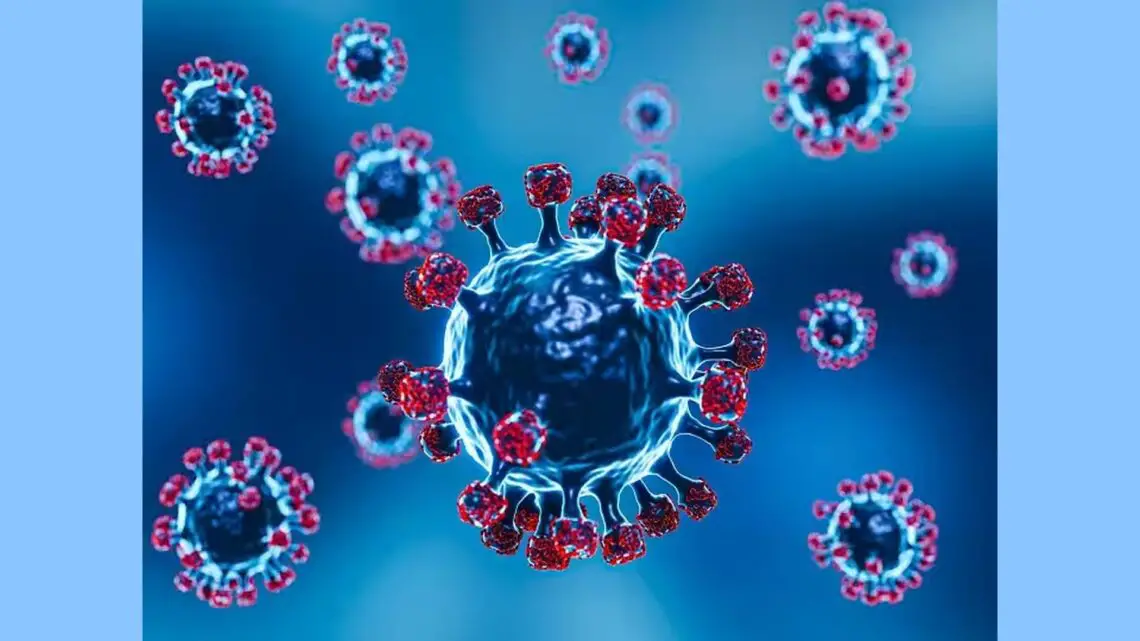
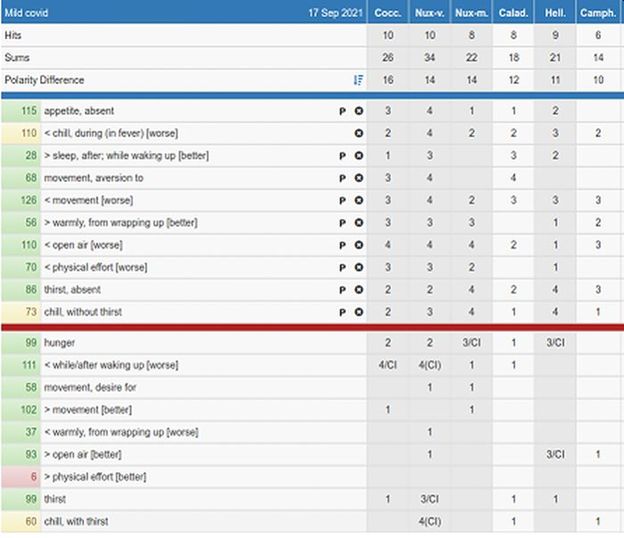

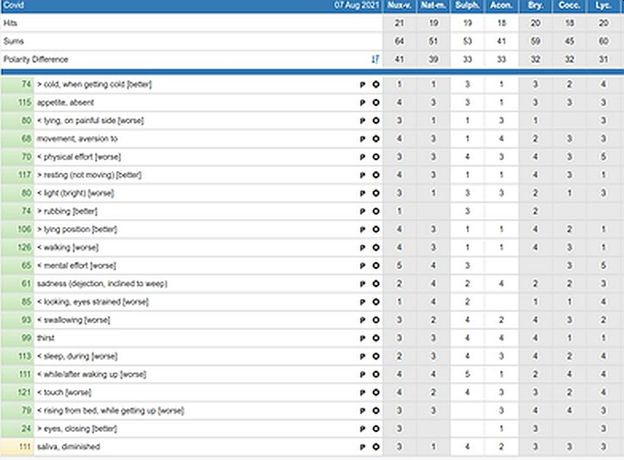
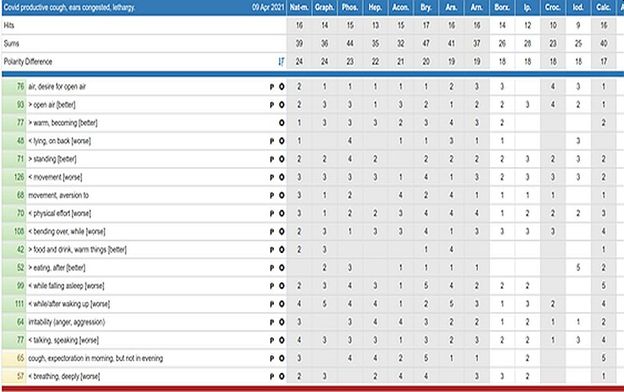
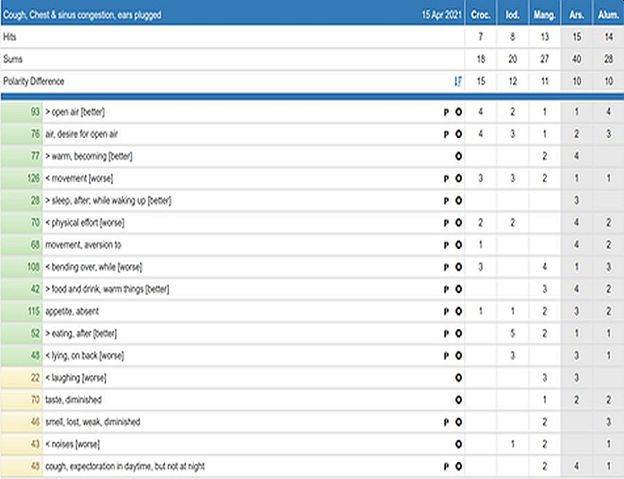
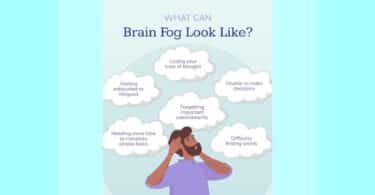

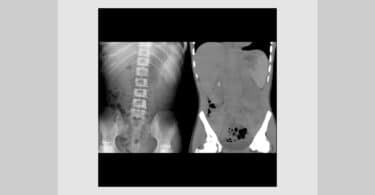
Great Article. I see so many General and physical rubrics and RARELY see MIND rubrics?
Why is that?
Are they not used?
Thanks
Yay for modalities!!!1 The veterinary homeopath in me is very happy!
Hi Domenic,
The entire system is built upon probabilities. Dr. Heiner Frei did some 30 years of analysis that for this system, reveals a much higher level of accuracy in results when “mentals” are used sparingly. Instead, the system relies on capturing the “physiological footprint” of the organism’s disease altered state. Besides sparing use of mind rubrics, there are also a range of nuances needed to employ the system effectively.
This is hard to get ones mind around given today’s powerful – and understandable – emphasis on mind symptoms. However, if you have a genuine interest in using the method, I highly recommend you get Dr. Frei’s book on the subject. He makes all his heuristics and algorithms explicit. That is how I learned the system to excellent effect.
Peace